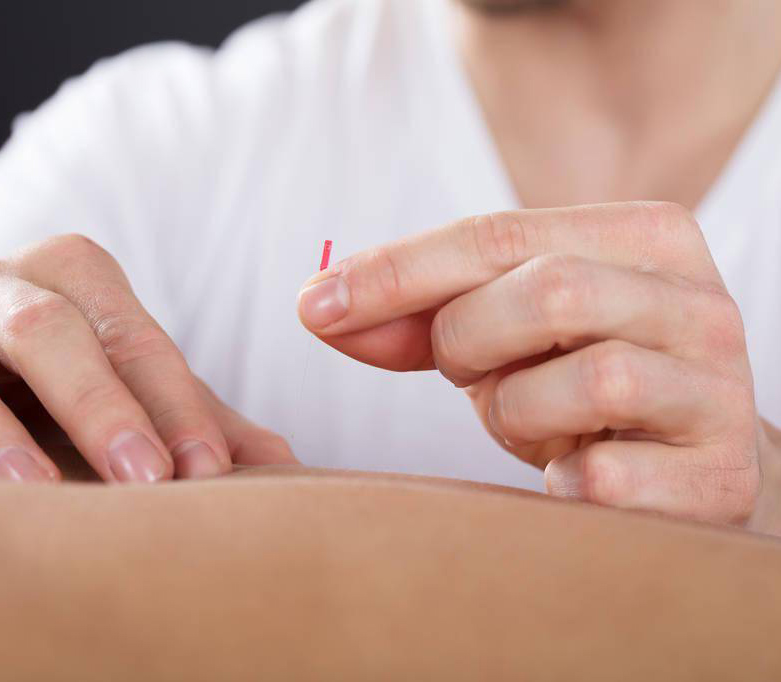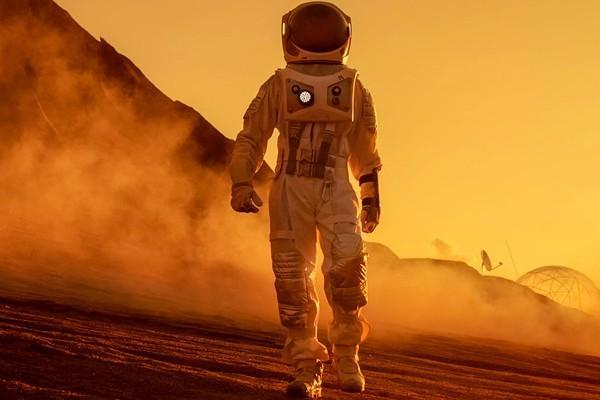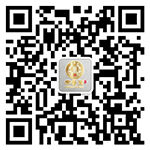

寻找针灸师来执行火星任务?听起来很奇特吧? 没错,您会很高兴知道美国宇航局和其他政府机构十多年来一直在研究针灸,以取代数百磅用于太空旅行的药物。
载人火星任务大约需要六个月到一年的时间,这对于在太空中度过来说是相当长的时间,你可以想象为这样的航行需要做哪些准备。 (玛丽·罗奇(Mary Roach)的《收拾火星:虚空中生命的好奇科学》是一本轻松愉快的书,里面充满了关于准备火星之旅的趣闻。不幸的是,没有提到针灸。)
法国、中国和俄罗斯的太空计划已经在太空中使用针灸来预防和治疗与微重力环境中生活有关的多种疾病。 (全面披露:在研究针灸之前,我是一名航空航天工程师,并与将卫星发射到太空的航天飞机有效载荷专家密切合作。)好莱坞会提到“零重力”,但这实际上不会发生在太空中,因为有各种各样的物体 向各个方向拉动。
微重力环境对健康的影响
我参加了国际中西医结合健康大会; 一位演讲者正在讨论微生物组对宇航员的支持(食物和环境因素)。 他说,宇航员患有白细胞减少、肌肉萎缩、T细胞介导的免疫力减弱、炎症标记物增加、“太空病”、骨质减少、视力受损、肾功能下降、体液流失、辐射暴露和失眠等症状并不少见。 其中大部分可以通过针灸有效治疗,且无不良反应)。 这就是我提交一份摘要并在航空航天医学会议上就该主题进行展示的动力。 不幸的是,由于新冠疫情,会议被取消了,所以我不得不暂时搁置这个想法。
大多数关于微重力环境的长期生物效应的研究都是在国际空间站(ISS)上进行的,因为航天飞机任务平均大约一周。 以下是他们在过去 24 年中的一些发现。
由于血液漂浮在太空中,心脏本质上是在度假,而早期太空计划中的宇航员在返回地球后昏倒的情况并不少见。 飞行外科医生发现,原本健康的宇航员射血分数降低,因为他们患有轻度心力衰竭,在航空航天界被称为“心血管功能失调”。
如今,空间站上有许多强制性的有氧活动(例如骑固定自行车),以保持心肌强壮,维持宇航员的心血管健康。
同样,平衡液漂浮在空间中,导致视觉刺激与发送到大脑的前庭系统信息不匹配,导致恶心和呕吐(也称为空间适应综合症)。 相信我,您最不想做的事情就是在 EVA(舱外活动)期间呕吐在宇航服的头盔中。
在地球上,日常活动(例如自然摆动手臂行走)会拉动我们的肌腱以维持骨密度,这就是为什么阻力运动在我们的老年至关重要。 不幸的是,失重会引起更高水平的骨吸收,从而导致骨质减少。 长时间在太空中和暴露于辐射会导致白细胞减少和 T 细胞介导的免疫力降低,这两种情况都可以通过针灸有效治疗。 此外,缺乏光暗周期会影响宇航员的昼夜节律,导致睡眠质量差。
科学家还模拟了微重力环境,以研究人类和动物模型中的细胞力转导。
肠道微生物组在太空中发生变化,导致一系列健康问题。 健康的微生物群可以保护我们免受代谢性疾病、过敏性疾病和炎症性肠病的侵害,而肠道菌群失调会导致各种病理并对免疫系统产生负面影响。 (正在进行一项研究“宇航员微生物组项目”,研究长期太空飞行导致的微生物组变化。)
有趣的是,MARS500 项目(从 2007 年开始,六名宇航员被限制在模拟火星表面栖息地 520 天)的数据发现,微生物组在研究过程中发生了改变。 另一项针对四名宇航员在国际空间站太空飞行之前、期间和之后的研究表明,他们的微生物组组成在太空飞行期间发生了变化,但在返回地球后恢复正常。
为什么需要针灸师?
将一磅有效载荷送入太空的成本高达 10,000 美元。 您可以想象,为宇航员存储一年的常用药物(不包括他们到达火星并返回后)可能会变得相当昂贵,并且需要额外的存储空间。
另一件需要记住的事情是,苯那君等药物会使飞行员或机组人员在最后一次服用后“停飞”长达 60 小时,这可能会影响任务。 此外,太空飞船上的水被循环利用,其中包括尿液,其中可能含有微量药物,并对全体船员产生负面影响。 (国际空间站上有一个完整的“闭环”系统,可以捕获宇航员的废水,例如尿液、汗水,甚至呼吸中的水蒸气;然后从水中过滤出杂质和污染物,以便再次使用。)
文献中指出的担忧之一是针在治疗过程中可能会脱落并漂浮在航天器周围。 由于它们非常小并且由不锈钢制成,因此有可能使关键电子设备短路。
一些研究正在评估激光针灸作为一种限制维持清洁针技术所需的额外供应并避免航天器遭受 FOD(异物损坏)的方法。 此外,中国人还拥有独立的电刺激装置,可以戴在膝盖或肘部以缓解疼痛。 还对压钉针(粘在皮肤上)进行了评估。
针灸和传统中医远非科幻小说那样,可以而且将会在美国宇航局 (NASA) 载人火星任务中使用,目前计划于 2030 年代末进行。
Acupuncturist Wanted: For Mission to Mars
Sounds pretty fanciful right? Well, you’ll be pleased to know that NASA and other government agencies have been researching acupuncture for more than a decade – to replace hundreds of pounds of medications for space travel.
A manned mission to Mars can take approximately six months to a year, which is a significant amount of time to spend in space, and you can imagine what it takes to prepare for such a voyage. (A lighthearted book full of factoids about preparing for a trip to Mars is Mary Roach’s Packing for Mars: The Curious Science of Life in the Void. Unfortunately, there are no references to acupuncture.)
French, Chinese and Russian space programs have already used acupuncture in space to prevent and treat a number of conditions relating to living in a microgravity environment. (Full disclosure: I was an aerospace engineer before studying acupuncture and worked closely with space shuttle payload specialists launching satellites into space.) Hollywood will reference “zero gravity,” but that doesn’t actually occur in space since there are all kinds of objects pulling in various directions.
The Health Consequences of a Microgravity Environment
I attended the International Congress on Integrative Medicine and Health; one of the presenters was discussing microbiome support for astronauts (food as well as environmental considerations). He said it’s not uncommon for astronauts to suffer from leukopenia, muscle atrophy, weakness of T cell-mediated immunity, increased inflammatory markers, “space sickness,” osteopenia, impaired vision, decreased kidney function, body fluid loss, radiation exposure and insomnia (most of which can be effectively treated with acupuncture, with no adverse effects). That was the driver for me to submit an abstract to present at an aerospace medicine conference on the topic. Unfortunately, the conference was cancelled due to COVID, so I had to shelf the idea for the time being.
The majority of studies on the long-term biological effects of a microgravity environment have been performed on the International Space Station (ISS), since space shuttle missions average about a week. Here are a few of their findings in the past 24 years.
Since blood floats in space, the heart is essentially on vacation, and it wasn’t uncommon for astronauts early in our space program to pass out upon returning to Earth. Flight surgeons found that otherwise-healthy astronauts had reduced ejection fractions because they were suffering from mild heart failure, known in the aerospace world as “cardiovascular deconditioning.”
Today, there are a number of mandatory aerobic activities (such as riding a stationary bike) on the space station to keep the myocardium strong and maintain astronauts’ cardiovascular health.
Similarly, equilibrium fluid floats in space, causing a mismatch between visual stimuli and the vestibular system information sent to the brain, leading to nausea and vomiting (also known as space adaptation syndrome). Trust me, the last thing you want to do is vomit in the helmet of your space suit during an EVA (extravehicular activity).
On Earth, daily activities such as walking with a natural arm swing pull on our tendons to maintain bone density, which is why resistance exercise is crucial in our senior years. Weightlessness, unfortunately, will lead to osteopenia by inducing higher levels of bone resorption. Long periods in space and exposure to radiation can cause leukopenia and reduced T cell-mediated immunity, both of which can be effectively treated with acupuncture. Furthermore, lack of light and dark cycles can affect astronauts’ circadian rhythms, leading to poor sleep quality.
Scientists also have simulated microgravity environments to study cellular mechanotransduction in human and animal models.
Gut microbiome changes occur in space, leading to a whole host of health issues. A healthy microbiome protects us from metabolic diseases, allergic diseases,and inflammatory bowel disease, while dysbiosis in the gut can result in various pathologies and negatively affect the immune system. (There’s an ongoing study, “The Astronaut Microbiome Project,” looking at microbiome changes due to long-term space flight.)
Interestingly, data from the MARS500 project (six astronauts were confined within a simulated Mars-surface habitat for 520 days, starting in 2007) found that the microbiome was altered during the study. Another study of four astronauts before, during and following spaceflight on the ISS demonstrated that their microbiome composition changed during spaceflight, but returned to normal following return to Earth.
Why Acupuncture?
It costs a whopping $10,000 to put one pound of payload into space. You can imagine that storing common medications for a crew over a period of a year, not including once they arrive at Mars and their return, can get pretty pricey and require extra storage space.
Another thing to keep in mind is that drugs like Benadryl will “ground” a pilot or crew member for up to 60 hours after the last dosage, which can impact the mission. In addition, water is recycled onboard the space ship, including urine, which can contain trace drugs and exert negative effects on the entire crew. (There’s an entire “closed loop” system on the ISS that captures astronaut wastewater such as urine, sweat and even water vapor from their breath; then impurities and contaminants are filtered out of the water to be used again.)
One of the concerns pointed out in the literature is the possibility of a needle falling out during a treatment and floating around the spacecraft. Since they’re quite small and made of stainless steel, there’s a possibility of them shorting out critical electronics.
Some studies are evaluating laser acupuncture as a way to limit the additional supplies required to maintain clean-needle technique and avoid FOD (foreign object damage) to the spacecraft. Also, the Chinese have self-contained electrostimulation devices that can be worn on the knee or elbow to provide pain relief. Press tack needles (that are taped to the skin) have also been evaluated.
Far from science fiction, acupuncture and traditional Chinese medicine can and will be used on NASA’s manned mission to Mars, currently scheduled for the late 2030s.


 Previous Post
Previous Post
